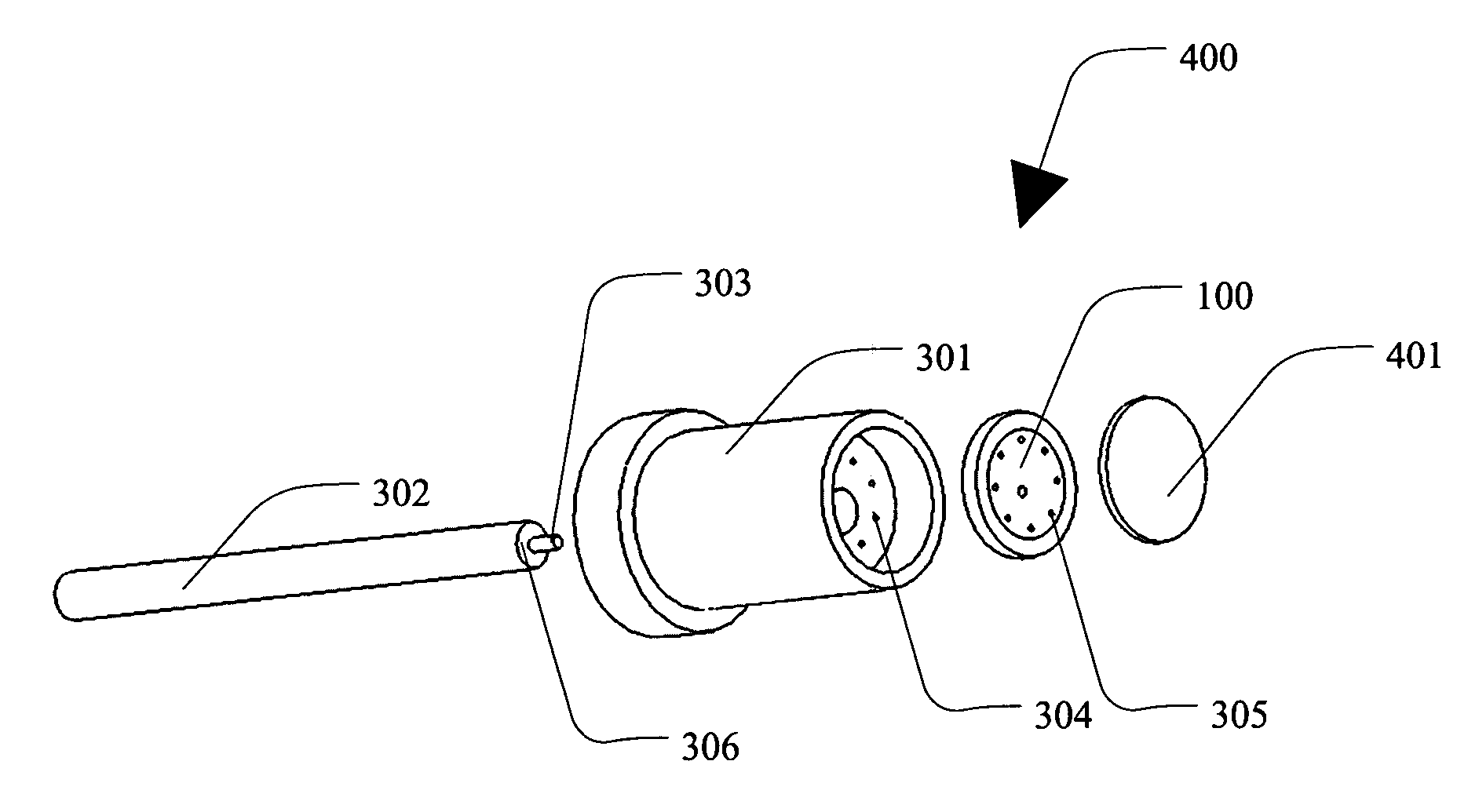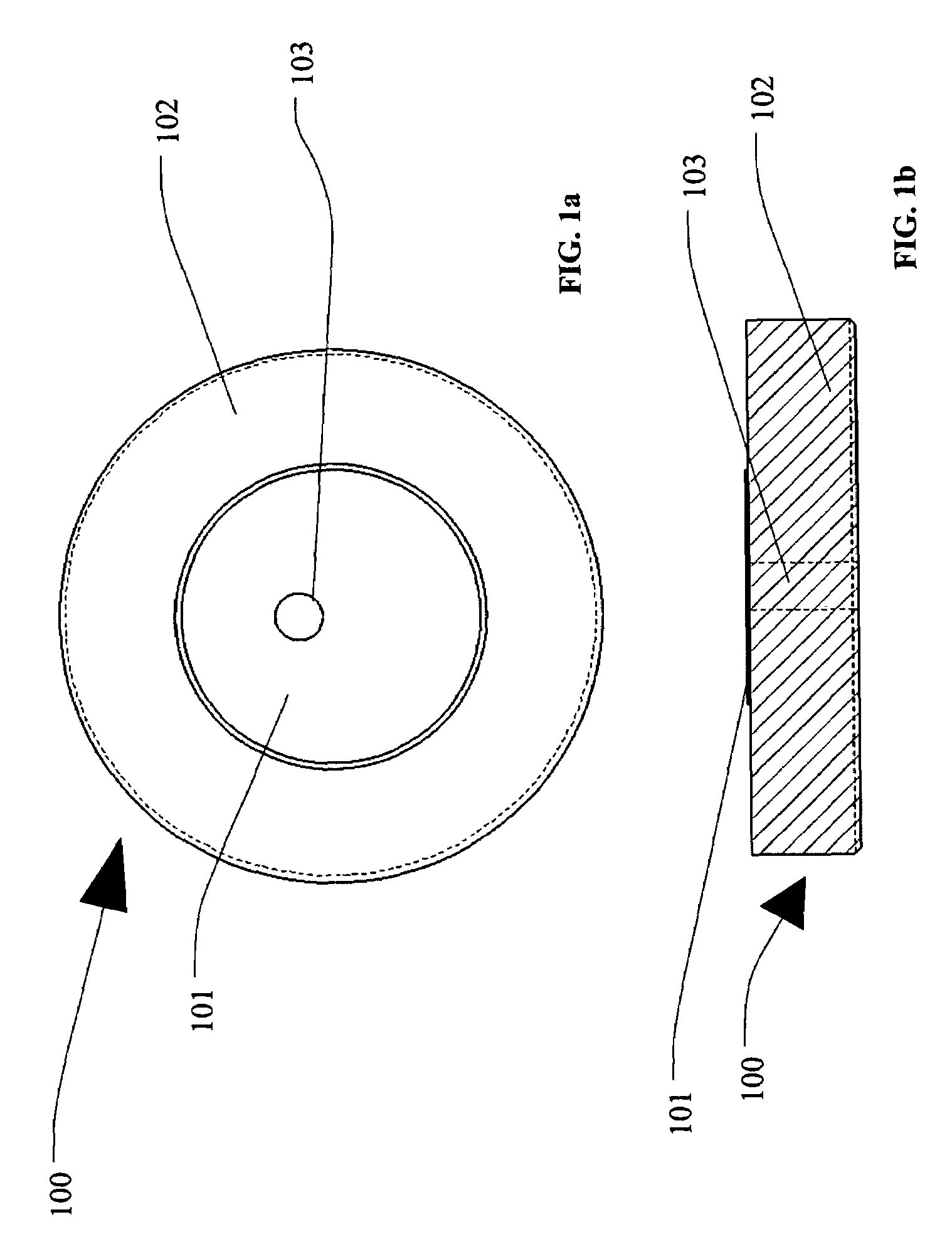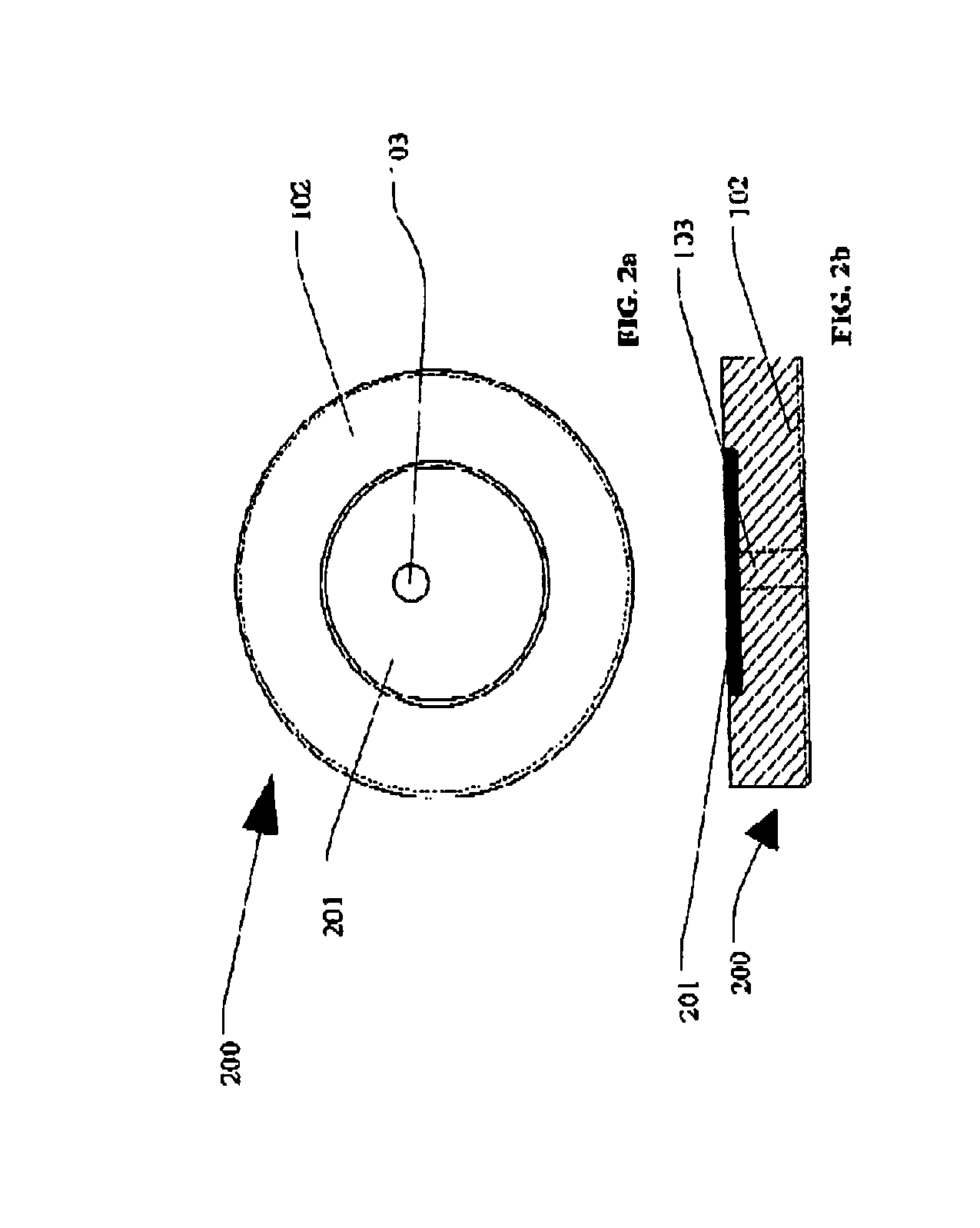Microstrip patch antenna for high temperature environments
a patch antenna and microstrip technology, applied in the field of patch antennas, can solve the problems of unaddressed industry needs, traditional radome approaches to improving the survivability of patch antennas are not well suited for extended life applications, and patch antennas have not yet been implemented in such harsh environments, so as to improve the performance and reliability of patch antennas, and improve high temperature performance.
- Summary
- Abstract
- Description
- Claims
- Application Information
AI Technical Summary
Benefits of technology
Problems solved by technology
Method used
Image
Examples
Embodiment Construction
[0025]Exemplary embodiments of the present invention provide for a patch antenna capable of operating within a high temperature environment for extended periods of time. For the purpose of this disclosure, a high temperature environment is defined by an environment having a temperature of or greater than 600° F.
[0026]Exemplary embodiments of the present invention will now be described more fully hereinafter with reference to FIGS. 1-8, in which embodiments of the invention are shown. FIGS. 1-2 provide a schematic of exemplary implementations of patch antennas using different metallization techniques in accordance with one embodiment of the present invention. FIG. 3 provides an assembly drawing of an entire probe assembly without a dielectric window in front of the patch antenna in accordance with one embodiment of the present invention. FIG. 4 provides an assembly drawing of an entire probe assembly with a dielectric window in front of the patch antenna in accordance with one embodi...
PUM
 Login to View More
Login to View More Abstract
Description
Claims
Application Information
 Login to View More
Login to View More - R&D
- Intellectual Property
- Life Sciences
- Materials
- Tech Scout
- Unparalleled Data Quality
- Higher Quality Content
- 60% Fewer Hallucinations
Browse by: Latest US Patents, China's latest patents, Technical Efficacy Thesaurus, Application Domain, Technology Topic, Popular Technical Reports.
© 2025 PatSnap. All rights reserved.Legal|Privacy policy|Modern Slavery Act Transparency Statement|Sitemap|About US| Contact US: help@patsnap.com



